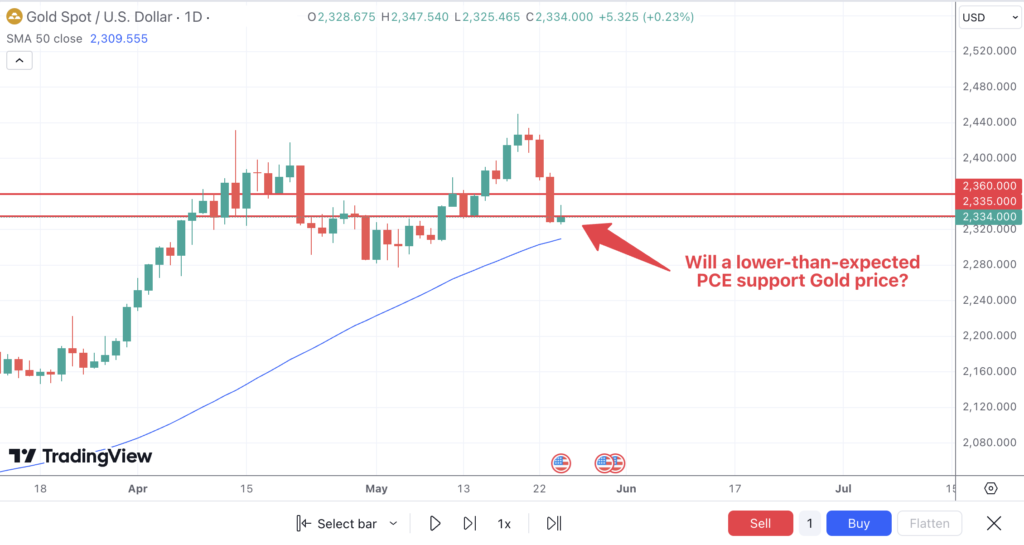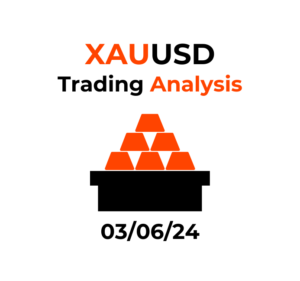Market Dynamics and Recent Performance
Gold prices have faced significant downward pressure recently, breaking through several key support levels. The metal’s recent softness has been driven by a combination of profit-taking after reaching all-time highs and a hawkish stance from the Federal Reserve. The release of hawkish minutes from the latest Fed policy meeting indicated that achieving the 2% inflation target might take longer than anticipated. This stance has pushed U.S. Treasury yields higher, strengthening the dollar and making non-yielding assets like gold less attractive.
Technical and Fundamental Influences
From a technical perspective, gold has broken below critical support levels, including the 50-day simple moving average at $2,327. Despite a lack of decisive selling momentum initially, continued pressure could lead to a deeper pullback. The next potential support area lies around the $2,265 level, representing the 61.8% Fibonacci retracement of the March-May rally. Further weakness could see prices targeting $2,225.

On the upside, if buyers manage to lift gold prices past the 50-day SMA and above $2,340, it could rekindle buying interest, potentially leading to a rally towards $2,365 and beyond. However, any recovery would need to overcome significant resistance around $2,385 to invalidate the current bearish outlook.
Fundamentally, gold’s performance is influenced by expectations surrounding the Federal Reserve’s monetary policy. Recent data suggest that inflationary pressures remain persistent, and the Fed is likely to maintain higher interest rates for longer. This environment reduces gold’s appeal as a non-yielding asset. Additionally, while strong demand from central banks, particularly in Asia, has provided some support, the potential for reduced Chinese retail demand in the second half of the year could further weigh on prices.
Looking Forward
In the week ahead, the focus will be on key economic data releases, including the core personal consumption expenditures (PCE) price index, the Fed’s preferred inflation measure. A lower-than-expected PCE reading could renew optimism for a disinflationary trend, potentially supporting gold prices if it strengthens the case for the Fed to consider easing policy later in the year. Conversely, persistently high inflation data could lead to increased expectations of prolonged higher rates, boosting Treasury yields and the dollar, and exerting further pressure on gold.
Additionally, geopolitical factors and changes in global economic conditions will continue to play a significant role. Traders should monitor these developments closely, as they could impact gold’s short-term outlook.
Key Takeaways
- Gold prices are currently under downward pressure, having broken through several key support levels.
- A hawkish stance from the Federal Reserve and higher U.S. Treasury yields are making non-yielding assets like gold less attractive.
- Technically, further support levels to watch are around $2,265 and $2,225, with resistance around $2,340 and $2,385.
- Economic data, particularly the core PCE price index, will be crucial in determining short-term market direction.
- Persistent inflation or stronger economic data could push expectations of higher rates further, exerting more pressure on gold.
- Strong demand from central banks, especially in Asia, has provided some support, but potential reduced Chinese retail demand could weigh on prices.
- Geopolitical developments and global economic conditions will continue to significantly influence gold’s outlook.

Conversely, if the PCE data indicates persistent inflationary pressures, market expectations for rate cuts could be pushed further out, potentially boosting Treasury yields and the dollar, which would exert additional pressure on gold. The Fed’s upcoming communications will be crucial in shaping these expectations. Traders should remain vigilant to any shifts in the economic data or Fed rhetoric that could influence gold’s outlook.
Key Takeaway
Gold prices are poised for potential volatility in the coming week, driven by key economic data and Federal Reserve communications. While the current bearish bias suggests further downside risk, any significant changes in inflation data or geopolitical developments could alter the market dynamics, providing opportunities for both downside protection and potential upside gains.

